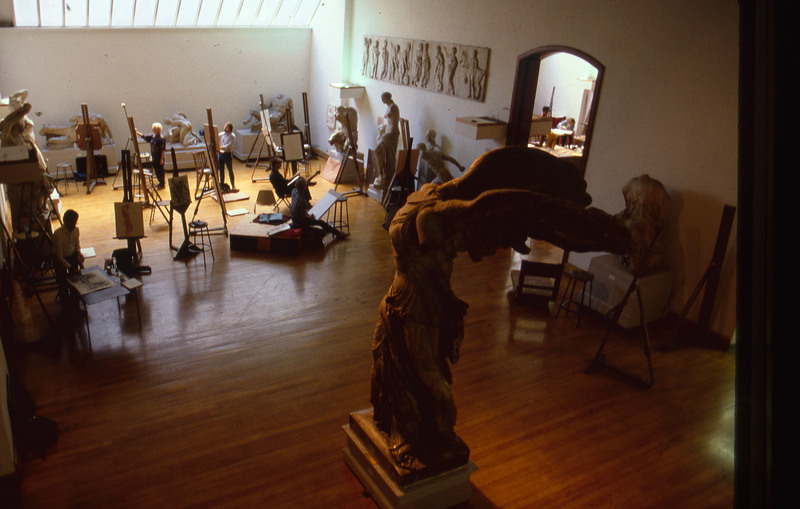Broad & Cherry Street Building
Overview
On April 22, 1876, while America celebrated its centennial, PAFA marked an important milestone in its then 71-year history with the opening of its new building. While the museums in New York City and Boston (both founded in 1870) were but fledglings, PAFA began its eighth decade in a striking and revolutionary new home.
Design
The building, designed by the Philadelphia firm of Frank Furness and George Hewitt, is generally considered to be primarily the work of Furness, who finished the project after the partnership dissolved in 1875. Furness had been a pupil of Richard Morris Hunt, who introduced him to the aesthetics of the modern Gothic revival. This included John Ruskin's appreciation of the richly colored designs of 14th-century Venice, Owen Jones's and Christopher Dresser's Eastern influenced ornament, and Viollet le Duc's use of foliated decoration combined with cast-iron architecture.
Features
Rising 70 feet above the sidewalk, the PAFA building must have seemed a towering fortress in 1876. Today, dwarfed by more recent buildings, it looks like a decorated jewel box. On the facade, heavy courses of dark stone rise toward a roofline marked with such colorful elements as red and black brick patterning, fanciful floral motifs, and a bas-relief frieze depicting famous artists of the past. A gothic window dominates the central pavilion and creates a motif that recurs inside.
After entering through a low vaulted hall, the visitor steps into the spectacularly ornamented Grand Stairhall. Its staircase, bordered by richly tiled floor and walls, and bronze and mahogany banisters, sweeps upward to the gallery level. This grand space is ringed with gothic arches carrying gold rosette-studded walls. The vaulted ceiling above is painted a brilliant blue with silver stars. Beyond are the galleries where foliate columns support exposed steel beams, one of several radical design elements in the building.








Continue exploring the history of PAFA's buildings:



